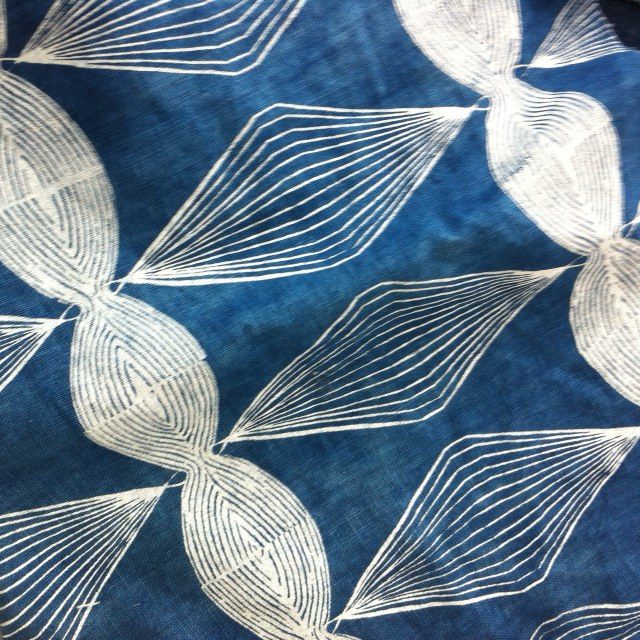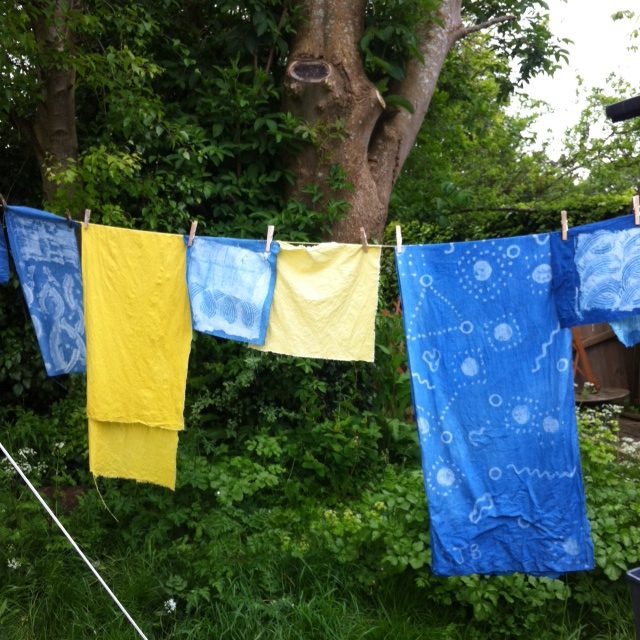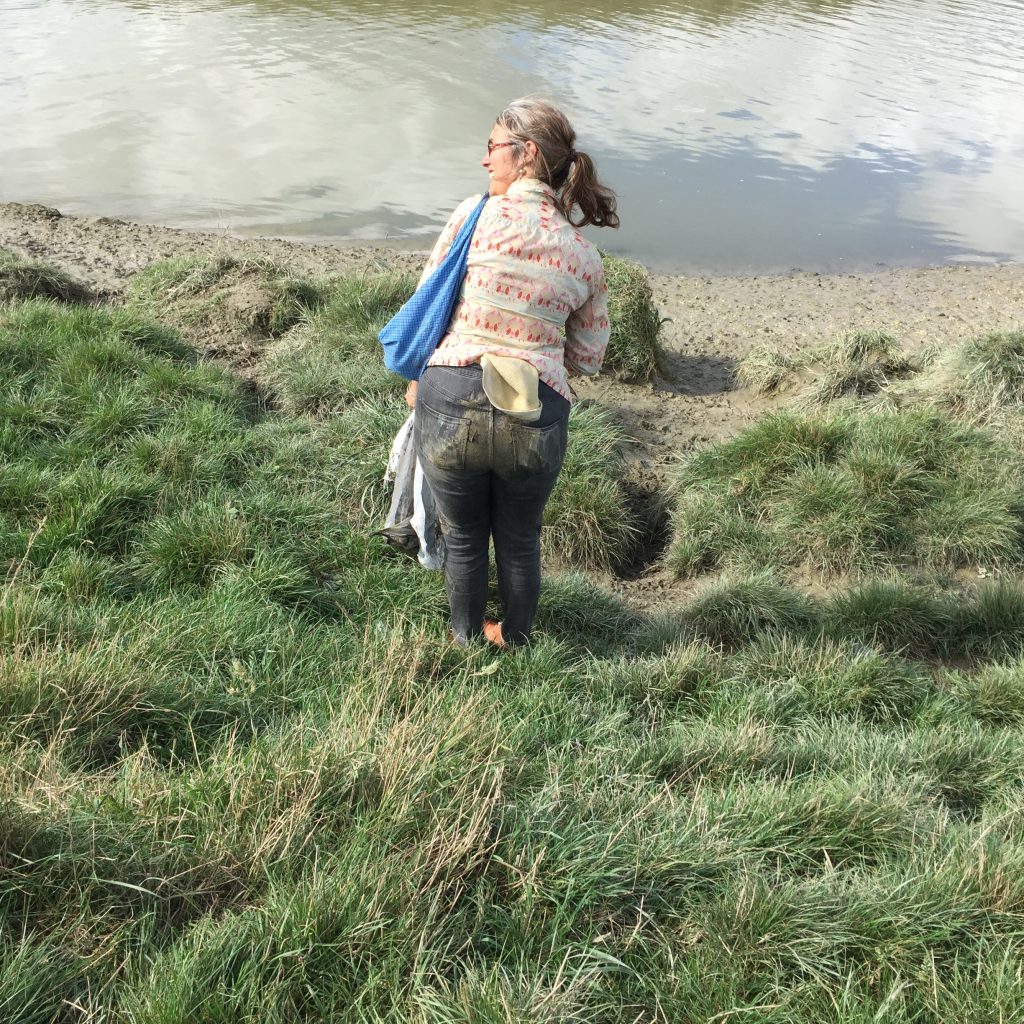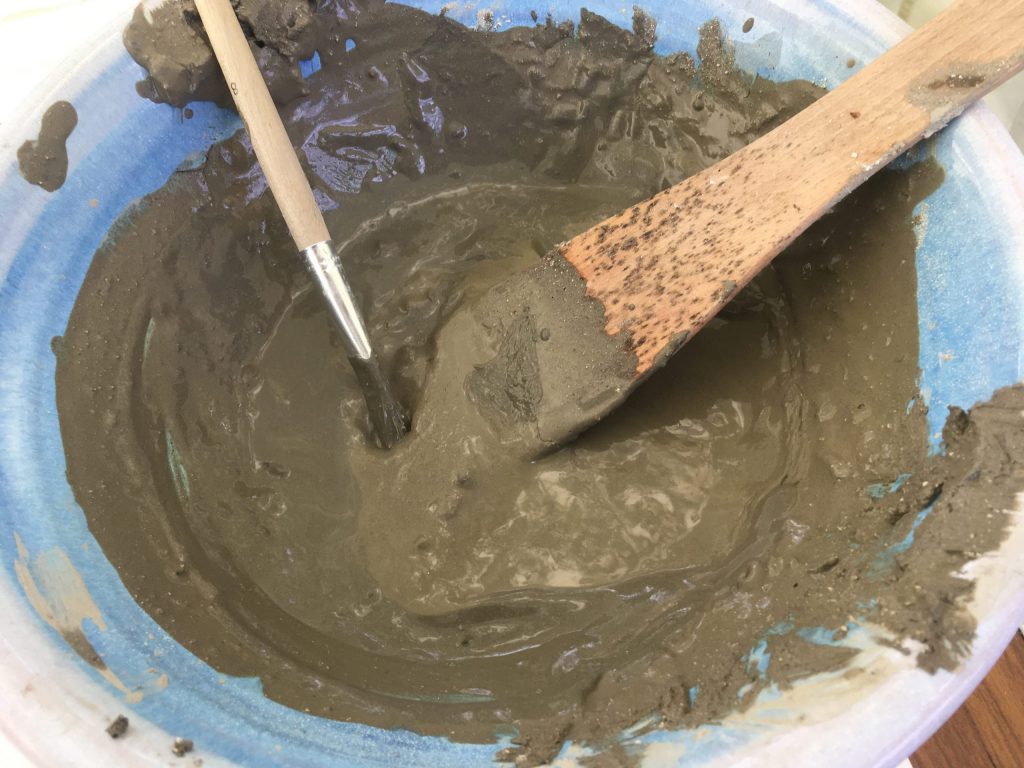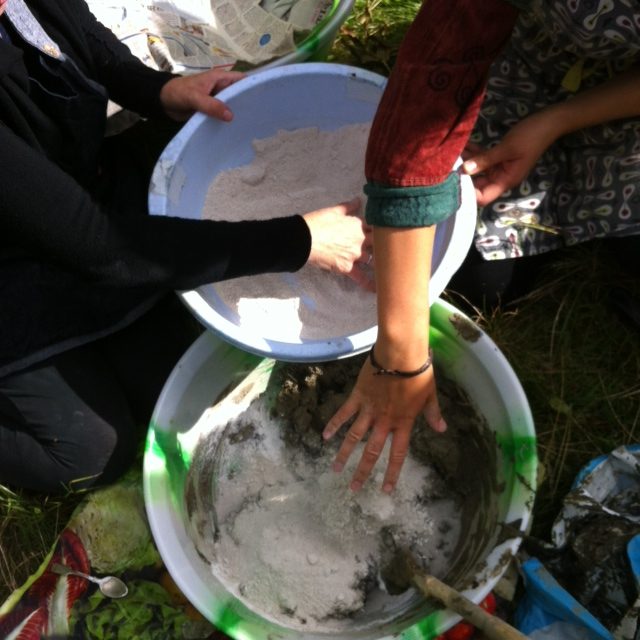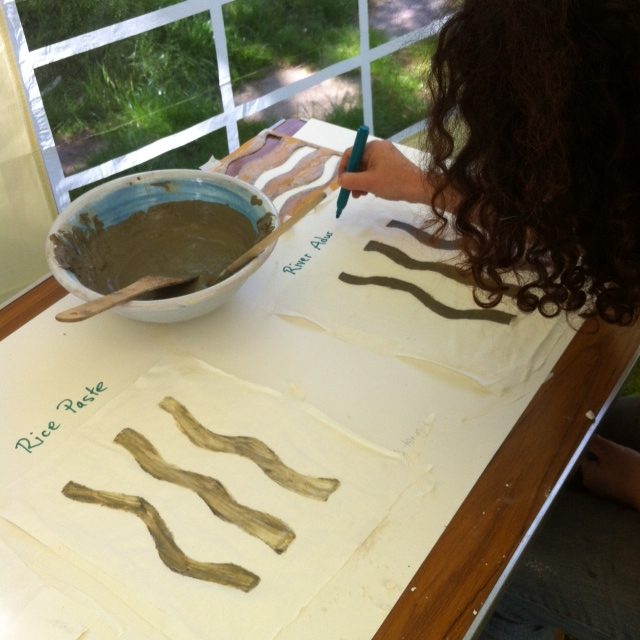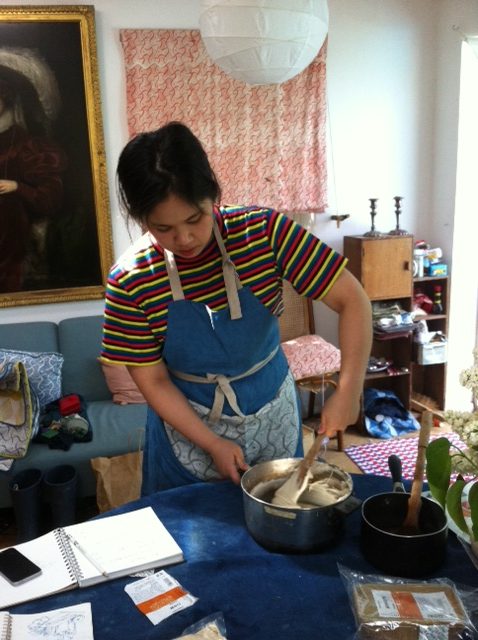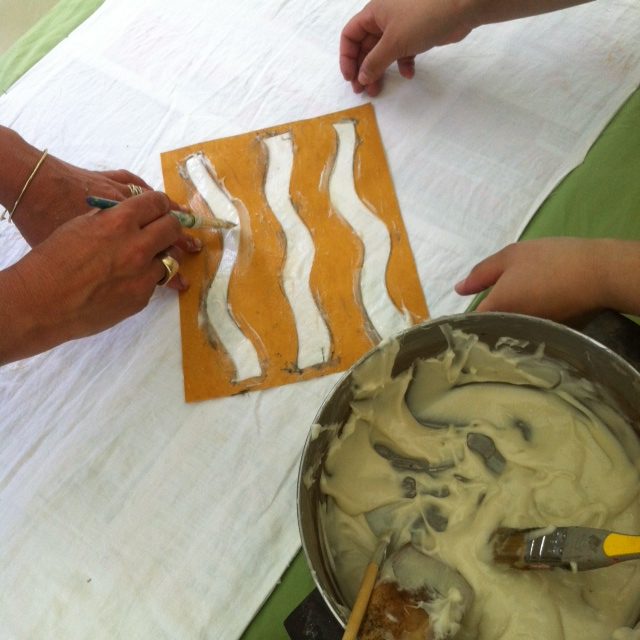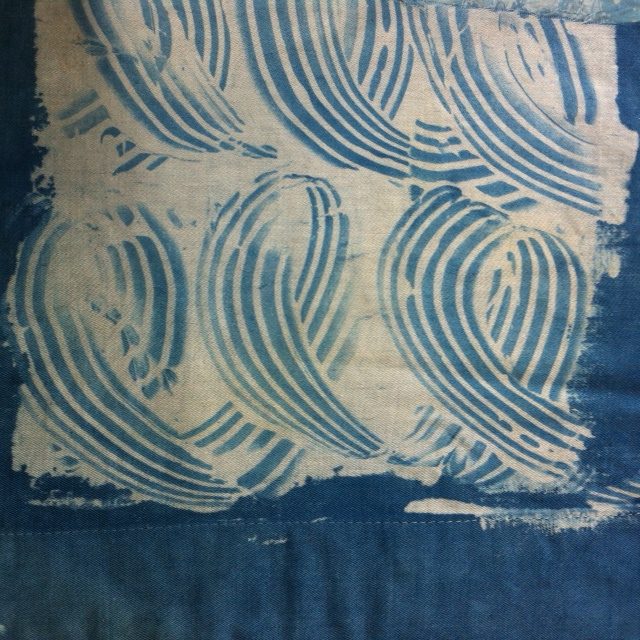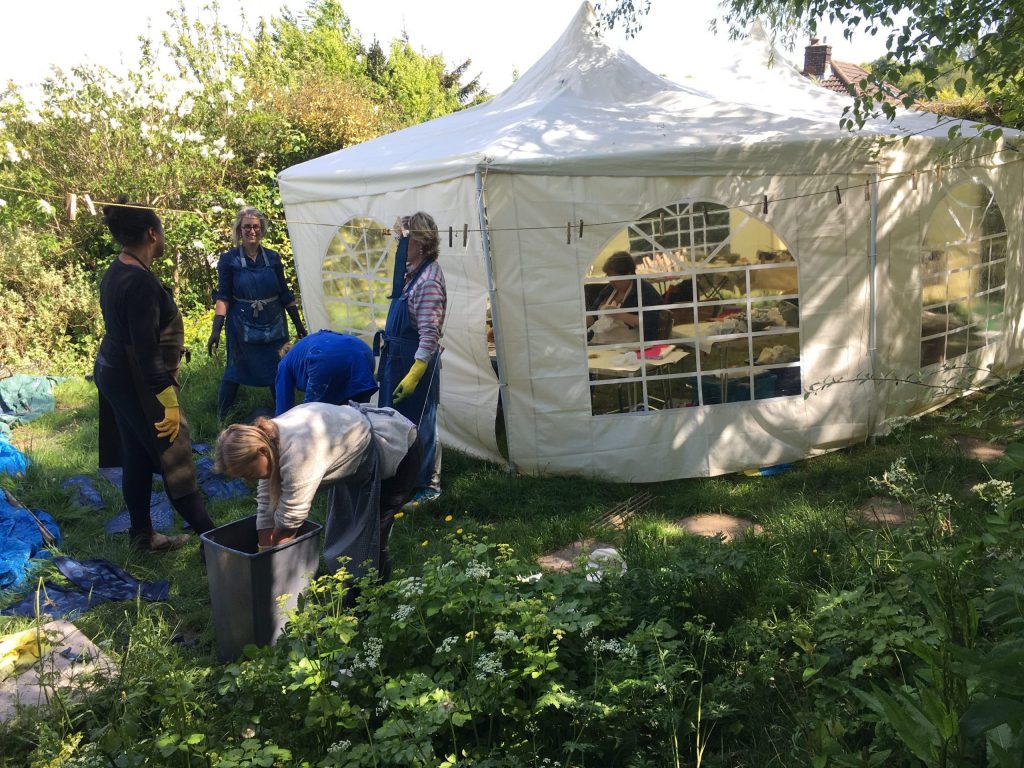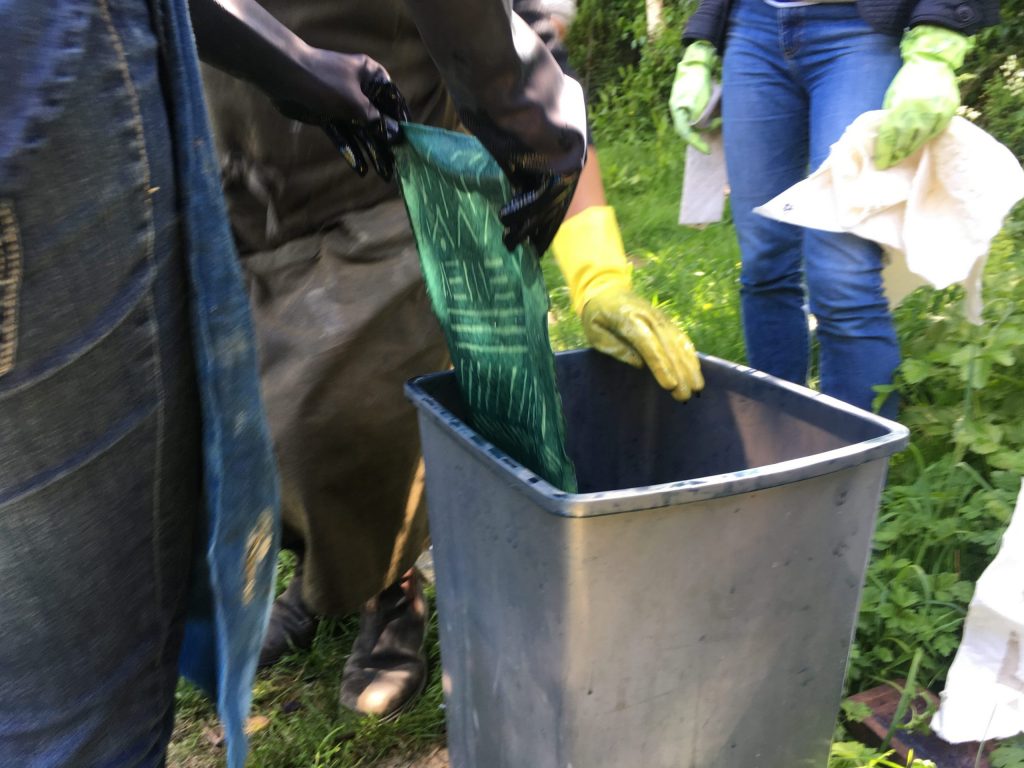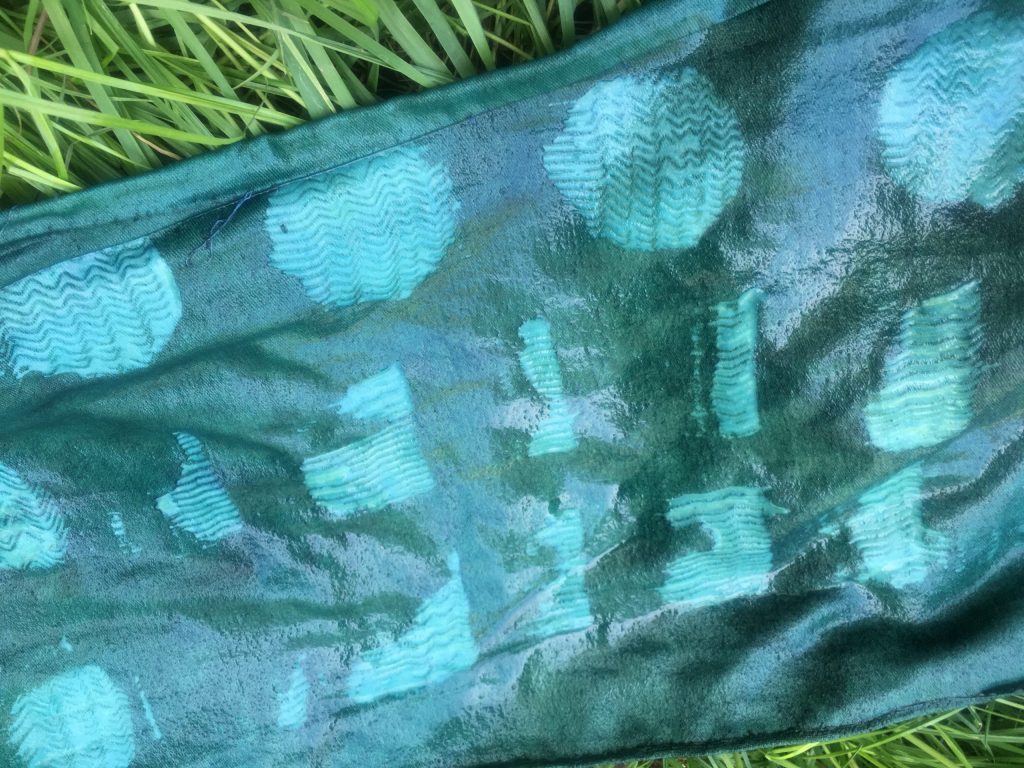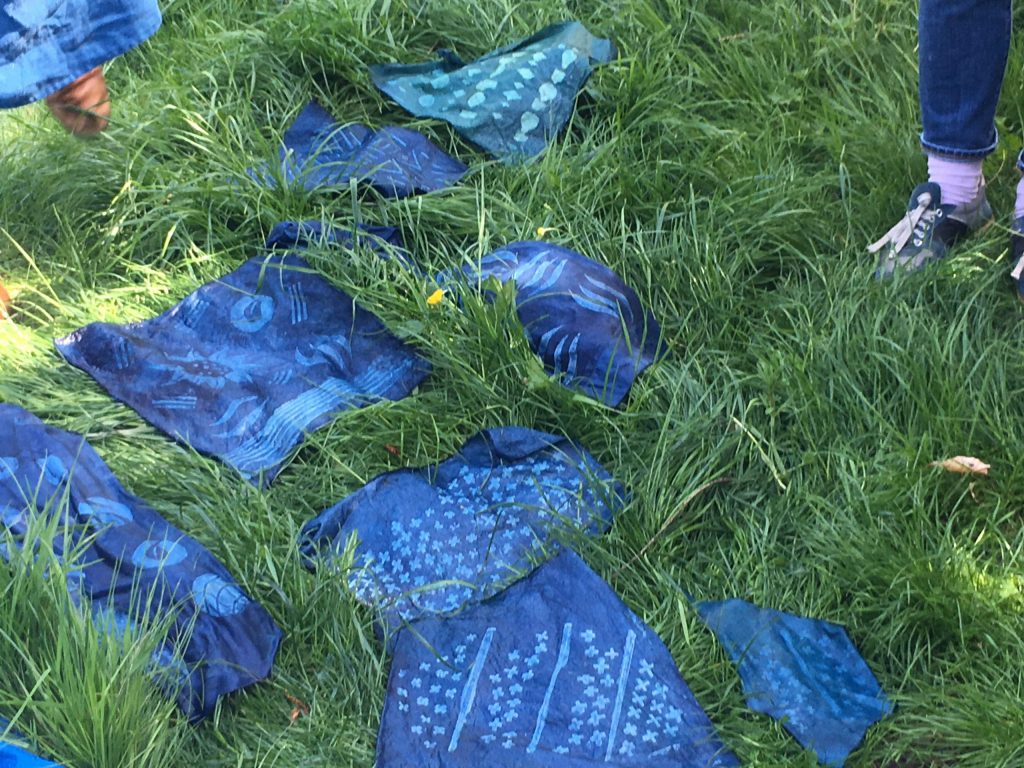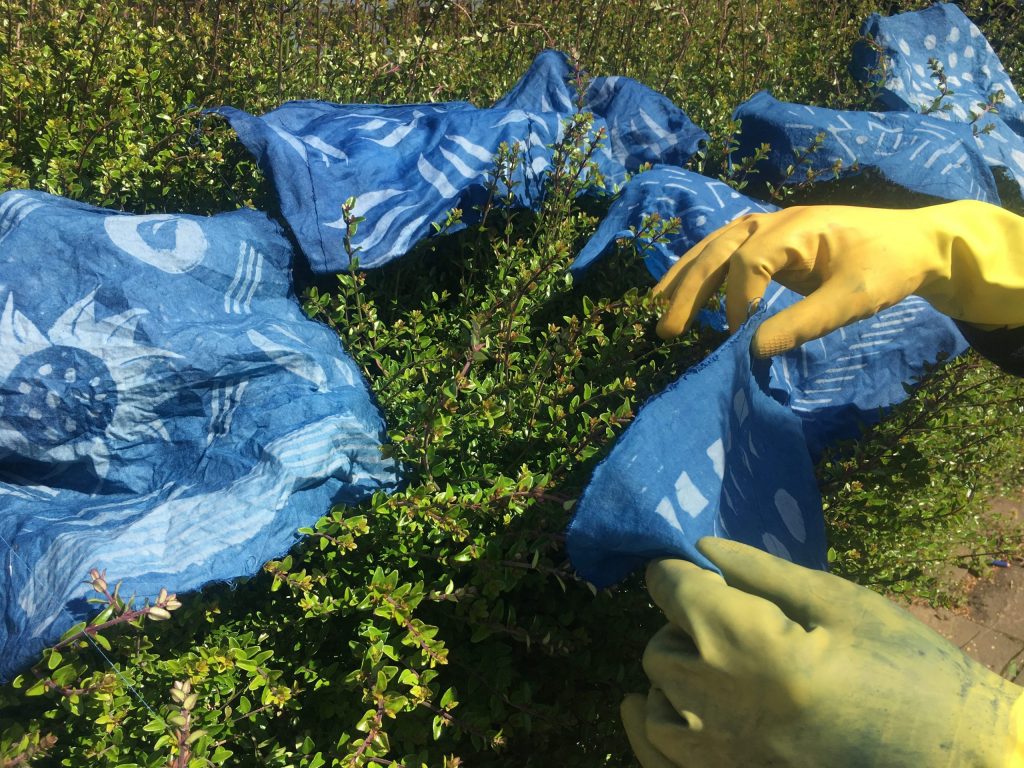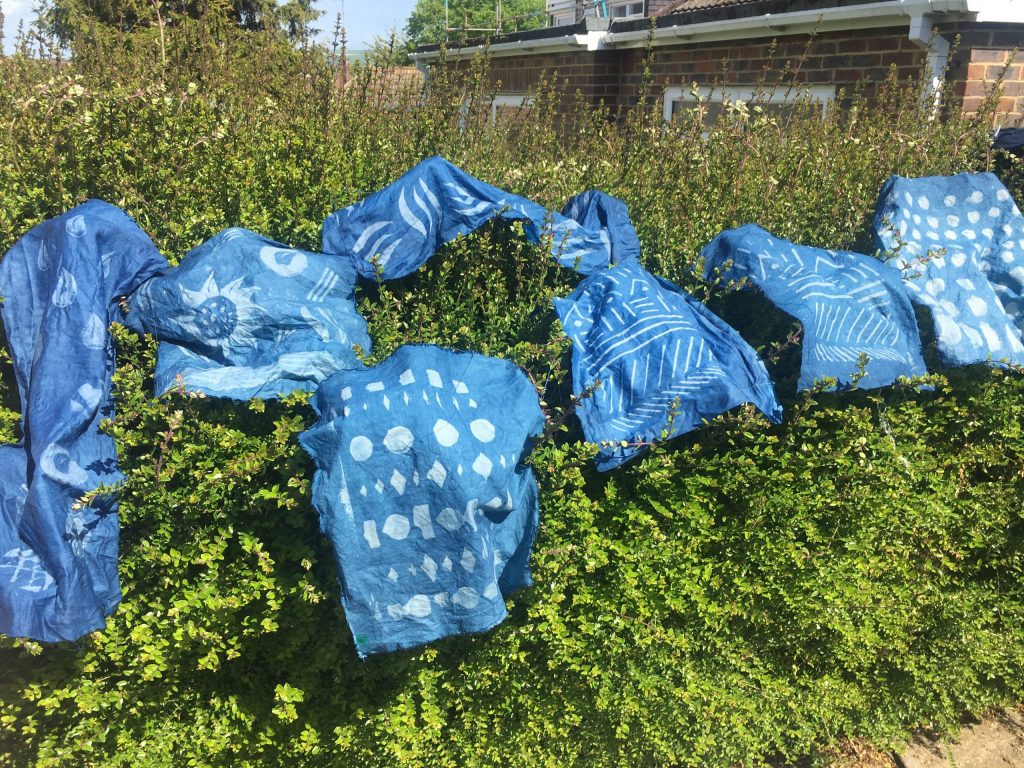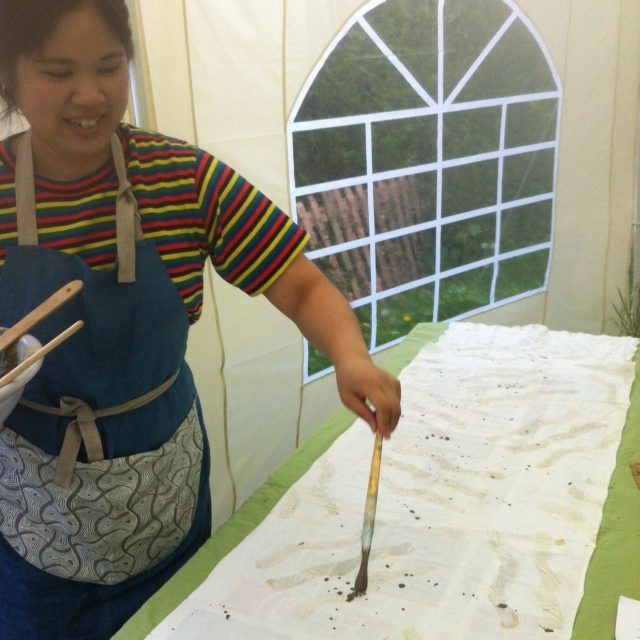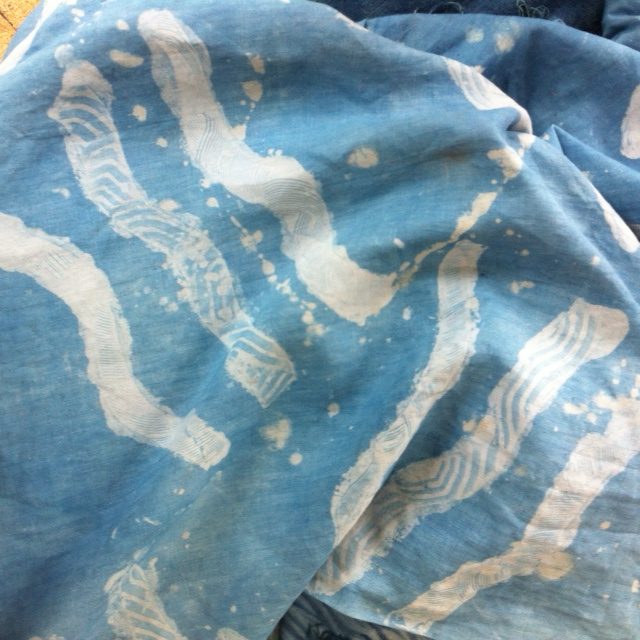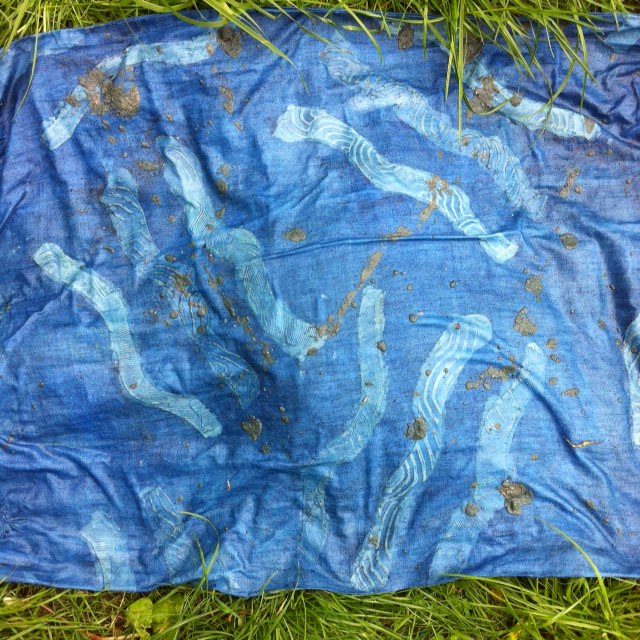Printing with resists & indigo dyeing
I’ve always loved working in negative – that’s the printer in me. When you cut a lino block you remove the parts you don’t want to keep so that the final image is the result of the all the marks you didn’t make…. if that makes sense.
I’ve experimented with lots of different ways of doing this on fabric – using bleach is really powerful if a little toxic. And there are resist binders you can buy commercially but I prefer a lower tech approach that’s safe to use and completely harmless to the environment.
That’s why I was so thrilled to have three different resist print techniques to explore with at this Springs Wild Textile workshops – ‘dhabu’ or Indian mud printing, ‘Adire’ Nigerian cassava paste & ‘Katazome’ Japanese rice paste, which Honami brought so kindly from Japan.
To make the mud resist we collected mud from the River Adur and mixed it with chalk from the hill & some gum arabic. The chalk had to be pounded until it is very fine – this is the hardest part. When the resist was ready it smelt of the river but also of the sea (it has a high salt content as the Adur is very tidal near us) and was a lovely smooth consistancy, a pleasure to handle and squish through our stencils, also to flick as we discovered.
Next was the ‘Katazome’ or Japanese rice paste resist which was probably the hardest resist to prepare and involved mixing the rice flour with the rice bran (a kind of poetry here as the rice kernal is re-united in this way) & then steaming it like dumplings. The final resist was very silky and we could apply it with a icing funnel (?) as well as comb through it and make very fine lines.
‘Adire’ or cassava paste resist was relatively simple by contrast. I mixed half a cup of cassava flour and half a cup of water and cooked them together until they made a porridge. This I sieved to get ready of any lumps. Cassava was lovely to apply and once again we were able to make very fine lines through it.
All the resists were left to dry overnight and much of the next day when they could really bake in the sun. They then went into the indigo bath – the mud for the shortest dip, then the cassava, then the rice paste.
The cloths were left to fully oxidise and then we rinsed off the resists and were left with the final prints…
We all agreed that the next thing was to try and combine the different techniques, using what we now know about their different qualities. If you are interested in resist printing and indigo do get in touch about joining the next workshop, which will be in September.

